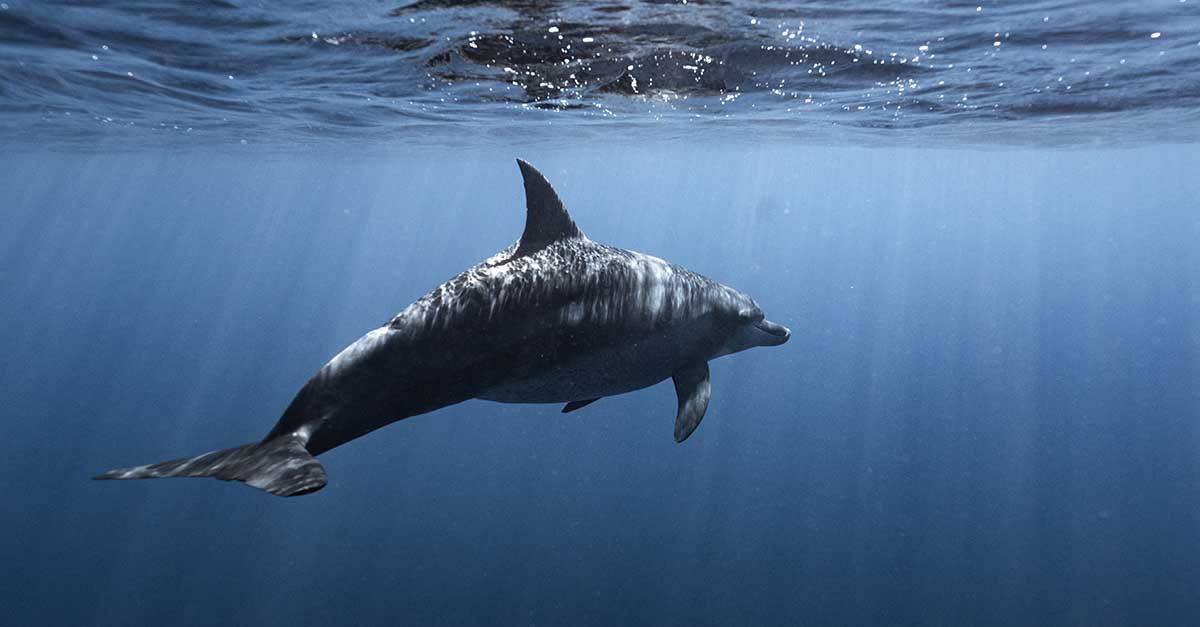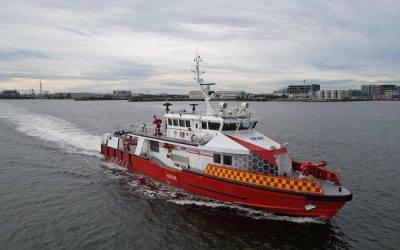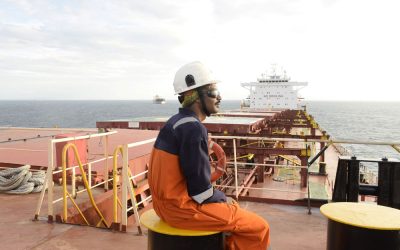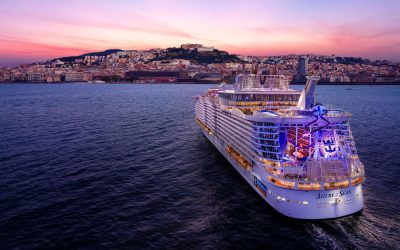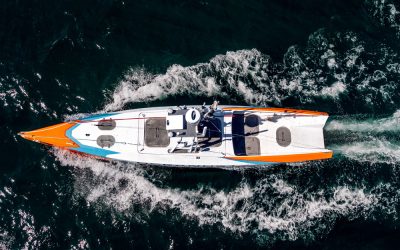Although the effects of Underwater Radiated Noise (URN) caused by ships on marine life have been a cause of concern for many years it’s a nebulous, multi-faceted problem where evidence may be contentious and remedial action difficult to put into practice. Part of the challenge has been forging relationships between stakeholders from quite disparate fields to develop not only solutions, but common methodologies and nomenclature.
In 2008, the European Union adopted the Marine Strategy Framework Directive (MSFD), an initiative put in place to protect the marine ecosystem and biodiversity. The MSFD consists of a series of Descriptors orientated towards different aspects of the environment including one, D11, which specifically addresses underwater noise.
Under this umbrella, 2019 saw the launch of the Joint Framework for Ocean Noise in the Atlantic Seas (JONAS) project, an Interreg-backed initiative which addresses threats to biodiversity from underwater noise pollution through better risk management and monitoring. JONAS brought together various countries with coastlines bordering the north-east Atlantic, including the United Kingdom, Ireland and Spain, with the objective of arriving at a consistent and cost-effective approach to MSFD requirements through the adoption of common methodologies. This was closely aligned with a similar project, the Joint Monitoring Programme for Ambient Noise North Sea (JOMOPANS).
While JONAS and JOMOPANS have now concluded, many of the partners involved have now joined a separate EU Horizon 2020-funded project: Solutions At Underwater Radiated Noise (SATURN). The SATURN consortium is a collaboration between marine engineers and naval architects – among them well-known industry players including class society Bureau Veritas and Netherlands-based consultants MARIN – alongside marine biologists from research-leading centres such as Leiden University, Netherlands, and Aarhus University in Denmark. These two groups are joined by a variety of specialist communicators and experts in marine spatial planning, including French consultancy Quiet-Oceans, an expert in sound propagation modelling.
SATURN’s aim is to examine which sounds pose the greatest threat to aquatic species and how these are produced and propagated, what the effects of URN are upon aquatic life, and to determine the most promising options for reducing its negative impact. Beyond that, it also aims to standardise terminology and methodology across all disciplines concerned by URN.
Irish-led
Spearheading SATURN is the Research Centre for Energy, Climate and Marine (MaREI) at University College Cork (UCC), Ireland, which had previously served a similar role with JONAS. Project coordinator Gerry Sutton, a hydrographer who originally became involved with URN through an earlier project to map Irish waters, tells TNA that Ireland is a good fit for leading such projects: “People trust the Irish. It’s not always the case that different parties in Europe can work comfortably together. As generalists we can follow most of the discussions from different multi- and transdisciplinary perspectives without going down too many rabbit holes.”
“Europe doesn’t have an equivalent of [Canadian regulator] Transport Canada to act as a single responsible body to invest the amount that would be needed to try and build a proper monitoring system,” he explains. “So it’s fallen to projects such as JONAS, JOMPOPANS and BIAS in the Baltic, and all of those projects are linked in terms of the people and personnel. Which is important because it’s where science is meeting the policy and driving forward to find common approaches that can then become standards.”
MSFD D11 has proven a far more complex task to implement than those who originally drafted it could have imagined, with countries taking quite different approaches depending on their own environmental sensibilities and biological habitats. Although EU existing regulations include a requirement for each member state to maintain a register for so-called impulsive noise, such as seismic surveys, there is no provision outside MSFD for continuous sound.
Sutton notes that the focus of the OSPAR Commission, which brings together the EU with the governments of the 15 north-east Atlantic countries, is to develop a broader definition of what represents good environmental status with regard to continuous noise, with the aim of tracking long-term trends.
By contrast, the Port of Vancouver’s ECHO programme, with support from acoustic monitoring consultancy JASCO Applied Sciences, has proved enormously successful both as a testing ground for various types of practical modalities for sound mitigation and the communicating the scientific basis for doing so. By doing so it becomes more viable to develop an incentivisation programme for shipowners, such as reduced port fees for ships that reduce engine speed in the approach channel or have a ‘silent’ notation.
However, there remains a lack of clarity in terms of how these risks are assessed and even the ‘silent ship’ notations being issued by classification societies don’t apply a consistent approach. One of the key barometers of SATURN’s success will be the advancement and promotion of an ISO standard for shallow water URN.
“The key thing is it doesn’t matter what you’re doing, or what the regulations are, if you don’t have high quality long-term broadband sound monitoring going on constantly. Otherwise you’re never going to be any the wiser,” he explains.
Emerging solutions
Sutton notes that big strides are currently being made in allowing vessels to become more self-aware of their own acoustic signatures, with research currently being undertaken into the development of deck-based equipment when they are entering the cavitation inception zone. Other technologies are being considered that would warn ships when they are entering the vicinity of cetaceans.
The tradeoff in propulsive optimisation – achieving the balance of maintaining or improving efficiency while reducing noise – is another of the project’s areas of focus. It’s a topic that has been a particular concern for a team at SATURN partner CNR-INM – the National Research Council of Italy’s Institute of Marine Engineering – led by Mario Felli. As well as studies focused on installations effects – such as the influence upon sound generation of non-uniform propeller inflow conditions and propeller/wake interaction with inflow vortices – more recently Melli’s team has been studying the interaction between the propeller wake and the rudder using CFD. Several years ago, prior to SATURN’s inception, CNR-INM developed an experimental methodology for establishing the ‘cause and effect’ relationship between flow characteristics and far-field acoustic perturbation involving the use of pressure fluctuation measurements and hydrophones, which is proving beneficial to the current work.
Meanwhile, a team at MARIN has recently been exploring the effectiveness of air bubble curtains to mitigate URN, injecting bubbles into the flows both below the ship hull to isolate machinery noise and upstream of the propeller disc to dampen the cavity collapse. After selecting a 94m coastal tanker as the reference ship, a variety of porous hoses for injecting the air bubbles were evaluated. Initial tests suggest that while thrust and torque decreased by several percent there was only a one percent decrease in propulsive efficiency. At the time of writing model testing is currently ongoing with the results expected to be published later this year.
While the implications of such research and technologies may not be felt in the immediate future a more pressing matter is arguably assimilating the outputs of broad-scale sound modelling into marine spatial planning and the prediction of future noise levels. Sutton notes that a growing emphasis is being placed upon the so-called excess levels – the sounds which can be attributed to shipping and other anthropogenic sources – and distinguishing these from other parts of the acoustic spectrum which are naturally occuring. This in turn may give rise to mitigations such as mandatory speed reduction and in some cases the rerouting of shipping lanes.
For the full article please see the October edition of The Naval Architect.
